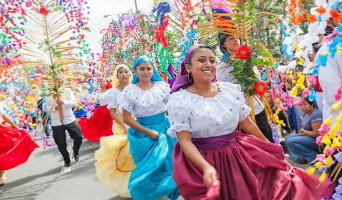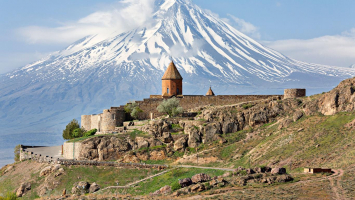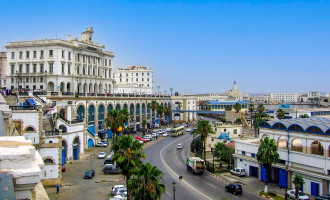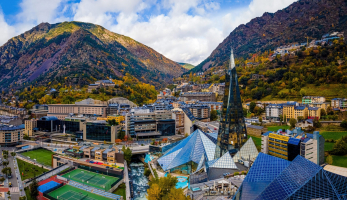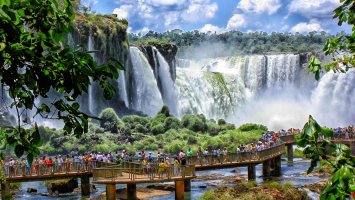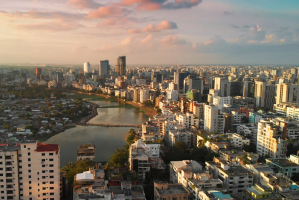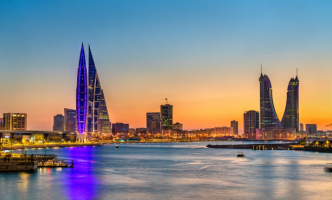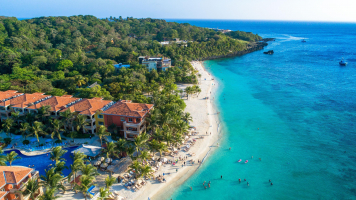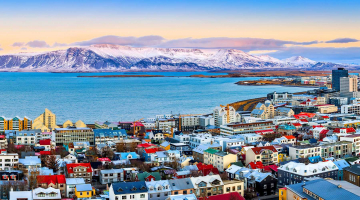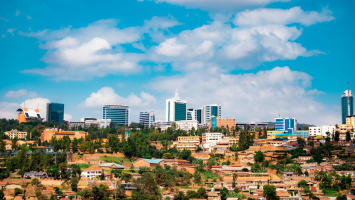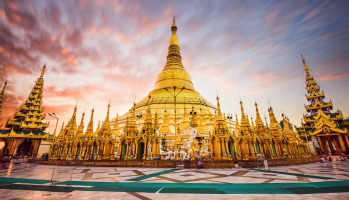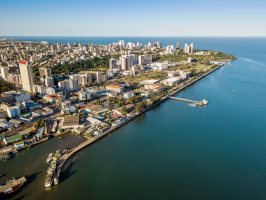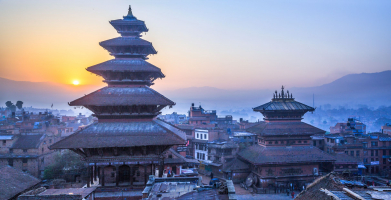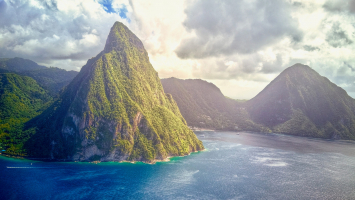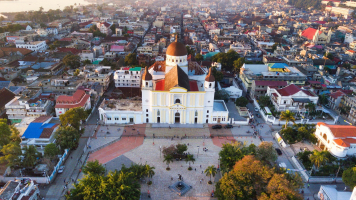Top 10 Unique Cultural Characteristics of Belarus
Belarusians' cultural identity has been molded by enduring spiritual ideals that honor goodness and humanity. These ideals have been handed down from ... read more...generation to generation for generations. These are lofty ideals of righteousness and goodness, consideration for others, and vehement opposition to injustice and violence. These ideals have taken the form of distinctive pieces of music and literature, as well as architectural and aesthetic traditions. Here are some of the unique cultural characteristics of Belarus that you can learn more about.
-
Eastern Orthodoxy is the most prevalent branch of Christianity and the dominant religion in Belarus. The fact that certain Belarusians (particularly in the east of the nation) are not religious is clear evidence of the legacy of the state atheism of the Soviet era. After the collapse of the Soviet Union, more unconventional and new faiths have emerged in the nation. 73.3% of Belarusians identify as Orthodox Christians, 14.8% as irreligious (atheists and agnostics), 9.7% as Catholic Christians (either Roman Catholic or Belarusian Greek Catholic), and 3.5% as adherents of other religions, according to the Ministry of the Interior's most recent estimates for 2011. (mostly pentecostals).
Rituals and sacred locations. Easter, Christmas, and days of recollection are some of the most significant religious holidays. Russian Orthodox Easter is observed between the end of March and the beginning of May, with a possible six-week gap between it and Catholic Easter. Easter in the Roman Catholic Church changes based on the lunar calendar. Roman Catholics commemorate on December 25, while Russian Orthodox celebrate on January 5. Roman Catholics honor All Souls Day (Dsiady) on November 2 while Russian Orthodox believers observe Radaunitsa, a memorial day, on April 28. Several locations in Belarus, including Polock, Sluck, Brest, and Turov, are associated with several Eastern Orthodox Church saints. The Garbarka Hill is the Russian Orthodox Church's holiest location.
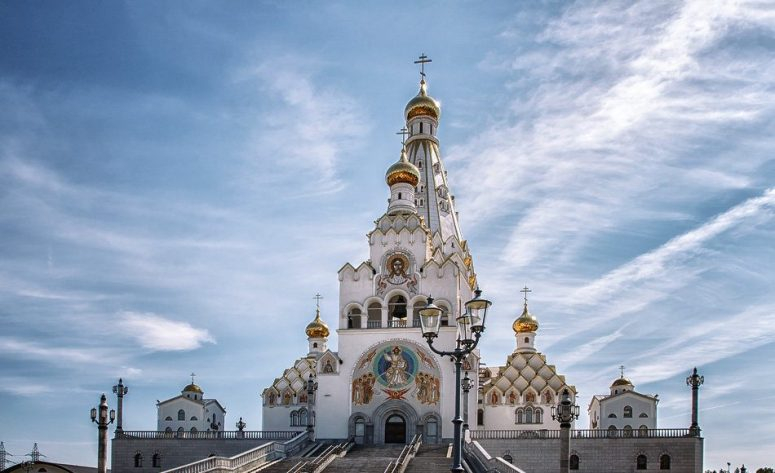
catalog.obitel-minsk.com 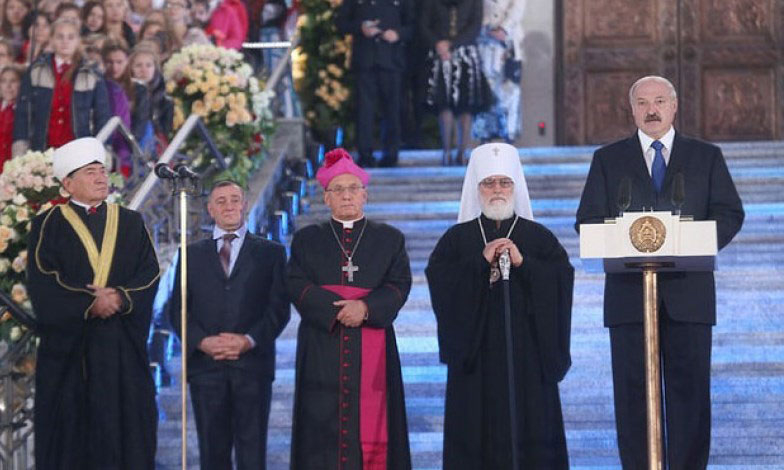
catalog.obitel-minsk.com -
Belarusian music is heavily influenced by folk and religion. The first attempts at collecting, publishing, and studying Belarusian folk songs were made in the nineteenth century. Many Belarusian composers are still influenced by folk music, and numerous festivals and contests for the genre are conducted every year. These cultural events feature a large number of amateur folklore groups, national song and dance ensembles, and folklore-scenic ensembles. It is one of the unique cultural characteristics in Belarus.
Along with the State Musical Comedy Theater and the State Symphonic Concert Orchestra, Belarus features the National Academic Opera and Ballet Theater. Opera and ballet from Belarus are well-known and highly esteemed abroad. Large cities like Minsk, which have a bustling cultural scene with opera, ballet, theater, puppet shows, and a circus, are where you can find performing arts centers. There is a well-known puppet theater in Brest. In the 1990s, rock music in Belarusian began to emerge.
The cultural customs associated with numerous religious and secular holidays, as well as with familial and domestic ceremonies, gave rise to the Belarusian theater. Puppet theater is one of the oldest traditions and has had a significant impact on developing international theatrical customs. Numerous aristocratic families supported their own theaters in the eighteenth century, and many new theaters appeared in the twentieth. The Gorkiy State Theater, the State Theater in Minsk, and the State Theater of Musical Comedy are currently the most well-known. The heroic and romantic genres, as well as the psychology of characters, are frequently emphasized in Belarusian filmmaking. Animation films made by Belarusian directors are particularly well-known. Additionally, Belarus has Tatyana, an all-female film production company.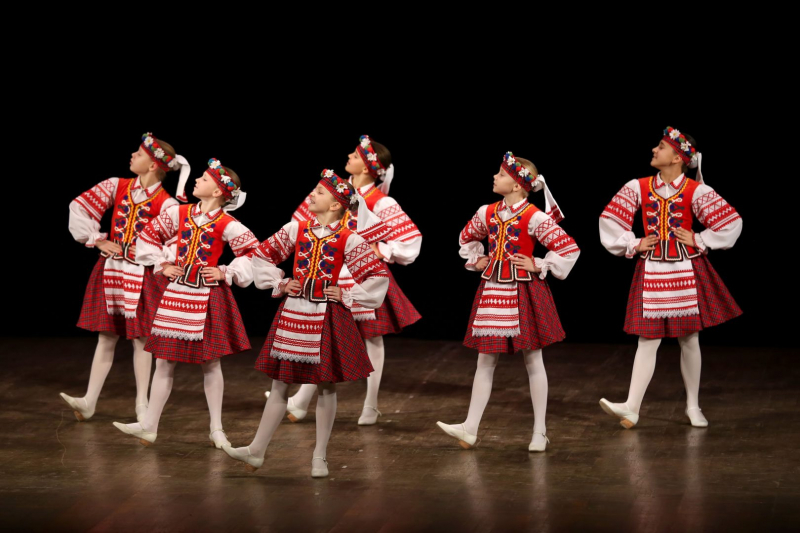
belarusprimetour.com 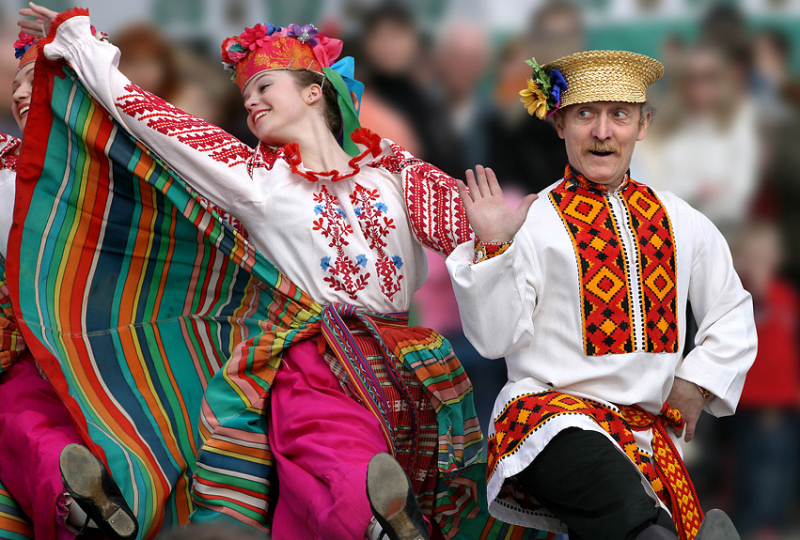
belarusprimetour.com -
Every region in Belarus had distinctive cultural elements, including distinctive clothing. For instance, national clothing in southern regions was brighter and more embellished, whereas, in northern regions, folk costumes were darker and had fewer decorations. Women in the eastern areas substituted a "saian" for the traditional outfit of a skirt, apron, and bodice. Saian is a dress with a top and skirt that are attached. It is one of the unique cultural characteristics of Belarus.
Male traditional costumes in Belarus were less elaborate and varied than those worn by women. Men wore a shirt with embroidery, pants, a belt made of woven material, outerwear, a cap, and shoes. The collar (most commonly a stand-up collar), cuffs, and shirtfront of the shirts are customarily embroidered. Less embroidery is present than what is found on shirts for women. A shirt is either mid-thigh or below-the-waist in length. A small or wide woven belt is always worn around the waist with the shirts. The pants were plain and without any decorations. Because individuals were saving fabric, they only extended to the ankle, not below the knee.Typically, woolen or linen material was wrapped around the leg from the knees down, and bast shoes or boots were worn on top. Coats, jackets, vests, and other outerwear came in a variety of styles. They were frequently crafted from thick, hand-knit wool, typically light gray wool, and embroidered in crimson. Typically, the coats came to the knees. They could have a belt or be buttoned by hand. People frequently wore the same coat in one household because men's and women's apparel were so similar. The main characteristics of men and women were the same, with the exception of their festive outerwear. In terms of headgear, Belarusian men would don straw hats in the summer and wool or fur caps in the winter.
The female traditional clothing consisted of an embroidered shirt, a skirt, an apron, a bodice (the last three of which might be replaced by a dress, as we've already said), a belt, a hat, and shoes. Women from Belarus of various ages wore slightly diverse attire. The marital status was typically indicated by certain clothing, such as headdresses and shirt embroidery patterns. There were therefore standard outfits for young girls, adolescent girls who were engaged, brides, married women, and senior women. Women in the area used to wear slender, woven belts with a variety of vibrant patterns on them. These woven patterns come in a wide variety.Belarusians typically wore leather boots and bast shoes for footwear. But they also went barefoot when going about their daily lives, especially when it was warmer. Married women swap their whitework bridal blouses for ones with customary red embroidery. In addition, they begin donning kerchiefs rather than elaborate headdresses and wreaths. Sometimes there is embroidery on this kerchief as well. A wimple, which is a long piece of cloth coiled around the head and neck, is another common traditional headpiece. It has beautiful ends that are embroideredly decorated.
Children in Belarus began donning gender-specific clothing when they were 4-5 years old. Before that, both boys and girls wore the same attire, which was a long belted shirt. Old female shirts were frequently used to make the children's clothes. They repurposed the shirt after the mother could no longer wear it and sewed smaller kid shirts out of the bits of fabric that were in better condition. Children in Belarus typically wore plain white shirts with minimal embroidery on the collar, cuffs, and hem.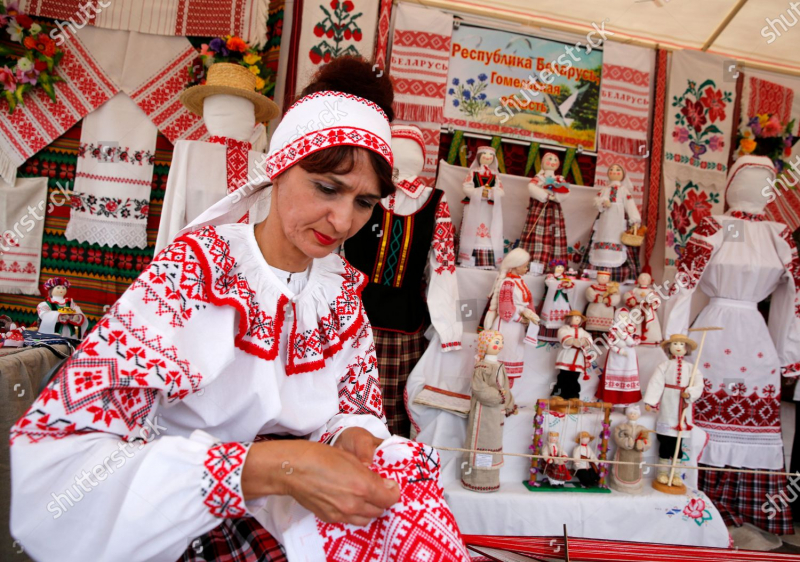
local-moda.blogspot.com 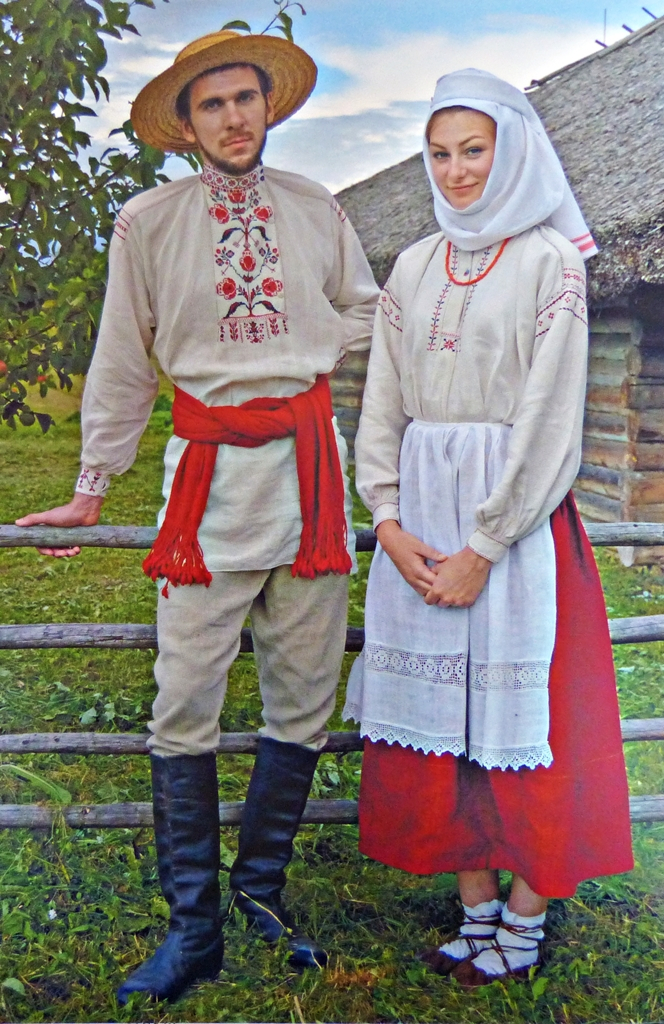
local-moda.blogspot.com -
Religious writing from the 11th to the 13th centuries served as the basis for early Belarusian literature; an example is the 12th-century poetry of Cyril of Turaw. These writings, which were typically composed in Old Belarusian, Latin, Polish, or Church-Slavic, frequently rhymed. Francysk Skaryna, a native of Polotsk, finished translating the Bible into Belarusian in the sixteenth century. It was the first book produced in Belarus or anyplace in Eastern Europe, and it appeared between 1517 and 1525 in Prague and Vilnius. In the late 19th century, Belarusian literature entered its modern era, with Yanka Kupala emerging as a significant author. Many of the writers working at the time, including Uadzimir Yka, Kazimir Svayak, Yakub Kolas, Mitrok Biadula, and Maksim Haretski, contributed to the Vilnius-based Nasha Niva newspaper in Belarusian.
After (Eastern) Belarus was included into the Soviet Union, the government seized control of Belarusian culture, and until 1939, only the areas that were incorporated into Poland saw free development of literature (Western Belarus). After the Nazi occupation of Belarus, a number of poets and writers fled the country and did not come home until the 1960s. The main subject of post-war literature was World War II, often known as the Great Patriotic War in Belarus (Vasil 'Bykaw, Ales Adamovich, etc.), which had particularly profound wounds in Belarus. The pre-war era was also frequently depicted (Ivan Melezh). With the publication of novels by Vasil' Bykaw and Uladzimir Karatkievich in the 1960s, Belarusian literature had a significant renaissance.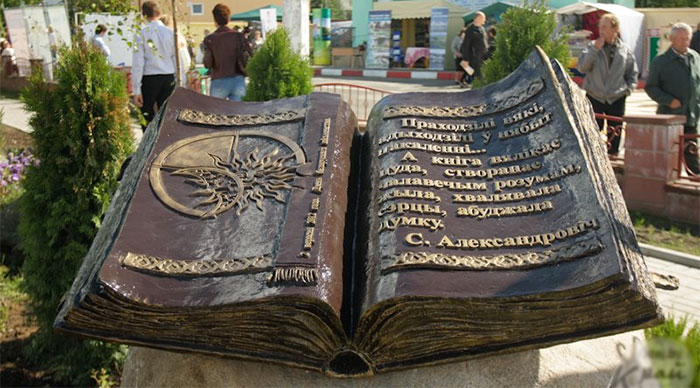
yesbelarus.com 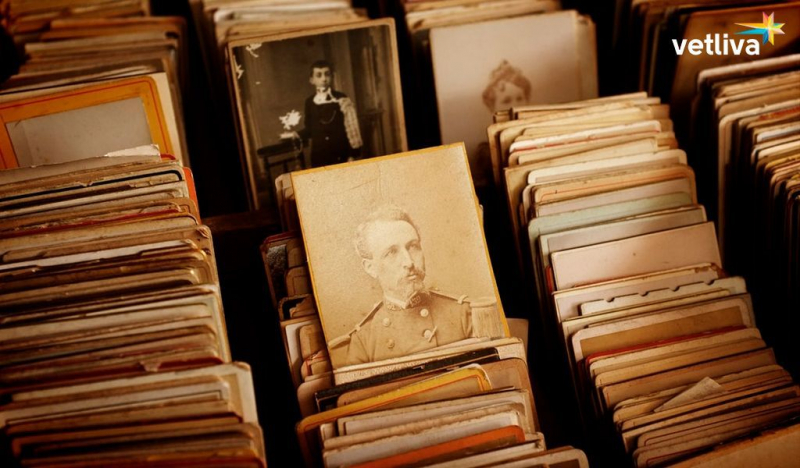
yesbelarus.com -
Ihnat Bujnicki is credited as being the creator of Belarusian theater, which also started to become more well-known in the early 1900s. However, some well-known plays from the 19th century include Dunin-Pinskaja and Marcynkevi's Liachta. One of Yanka Kupala's most well-known pieces, Paulinka, was performed in Siberia for the Belarusians who were being transferred there. Folk music from Belarus has been recorded since at least the 15th century. Skomorokhs were the primary occupation for musicians before that. Up to the 16th century, Orthodox church music utilized a neumatic chant known as znamenny, which comes from the Russian word znamena, which means sign or neume. This was followed by two centuries of musical innovation that borrowed from the Renaissance and the Protestant Reformation.
Partesnoe penie, or part singing, became popular for choruses in the 17th century, and then private theaters started popping up in towns like Vitebsk and Minsk. Pesniary, Dreamlin, and NRM are examples of well-known Belarusian musical ensembles. There are currently 70 orchestras, 27 travelling professional theater companies, and 15 concert promotion organizations in Belarus. Playwrights Nikolai Khalezin and Natalya Kolyada established the Belarus Free Theatre in 2005. This underground theater enterprise aims to fend against pressure and censorship from the Belarusian government. The group performs in homes, and special police forces from Belarus broke up at least one of these performances. Famous Western playwrights like Tom Stoppard, Edward Bond, Václav Havel, Arthur Kopit, and Harold Pinter have lent their support to the Belarus Free Theatre.
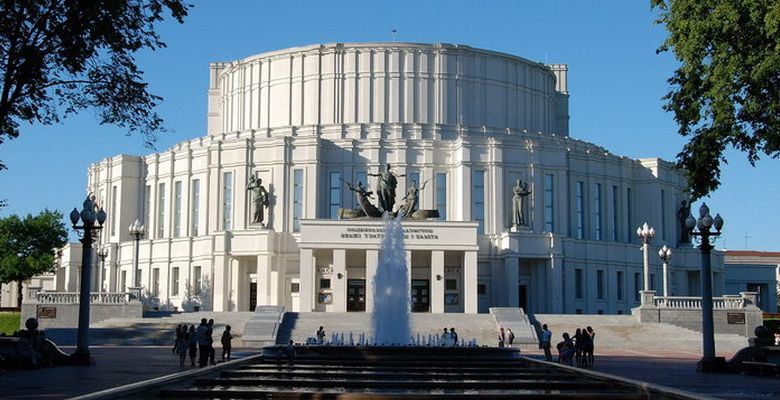
yesbelarus.com 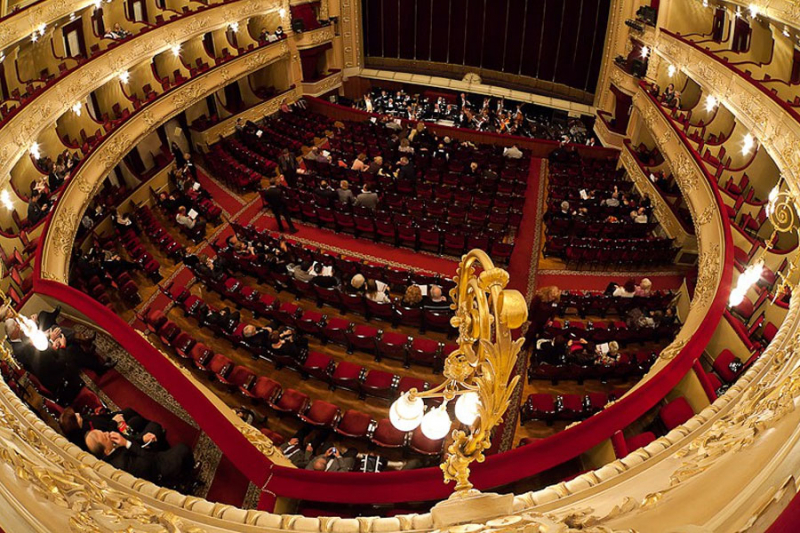
yesbelarus.com -
The Slavonic Theatrical Meetings, Minsk Spring, International Jazz Festival, National Harvesting Festival, "Arts for Children and Youth," "Youth Variety Show Arts Competition," "Muses of Nesvizh," "Mir Castle," and the National Festival of Belarusian Song and Poetry are just a few of the annual cultural events that the Belarusian government sponsors. Talented Belarusian performers from the fields of music, art, poetry, dance, and theater are featured in these events. Numerous awards for outstanding music or art are given out at these festivals and are named after Soviet and Belarusian heroes. Although modern nationalists contend that few of these sponsored events have anything to do with Belarusian culture, let alone culture in general, all of the events are governed by the Ministry of Culture of Belarus.
Many state holidays, like Independence Day or Victory Day, draw sizable crowds and feature a variety of spectacles, including military parades and pyrotechnics. Vitebsk or Minsk are where the majority of the festivities are held.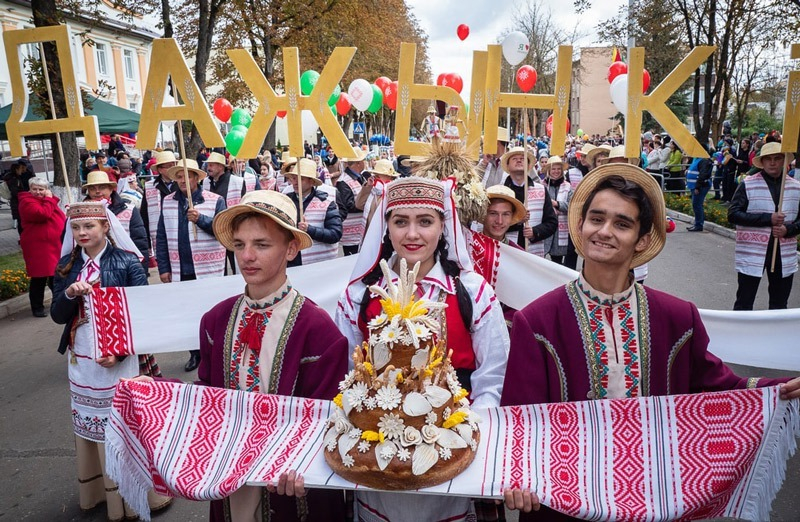
visit-belarus.com 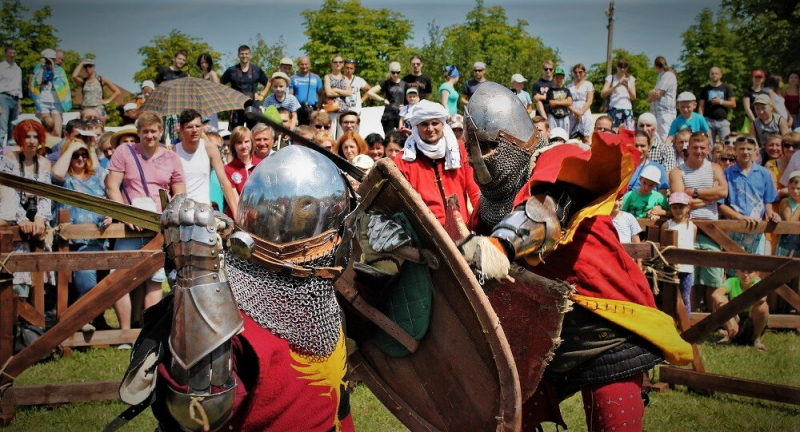
visit-belarus.com -
Although they still like more "active" sports like ice hockey and football, Belarusians are known for their love of board games like chess and checkers. One sport that they excel at, even in international contests like the Olympics, is ice hockey. It is one of the unique cultural characteristics in Belarus.
Belarus participated in the Olympic Games as a member of the Soviet Olympic team from the 1952 Helsinki Games until the dissolution of the Soviet Union. Belarus participated in the Olympics in 1992 in Barcelona as a member of the Unified Team. At the 1994 Lillehammer Games, Belarusian athletes took part in an Olympic competition for the first time.
BATE Borisov has participated in the Champions League, although the national football team has never been able to qualify for a significant competition. Ice hockey is the most popular sport in the country and receives significant government backing. The national hockey team often competes in the World Championships, frequently making the quarterfinals, and placed fourth at the 2002 Salt Lake City Olympics after a spectacular upset victory over Sweden in the quarterfinals. In particular for Belarusian team HC Dinamo Minsk, there are many Belarusian players in the Kontinental Hockey League in Eurasia. A few have also participated in the National Hockey League in North America. Leading biathlete Darya Domracheva won three gold medals at the 2014 Winter Olympics, among other accolades.
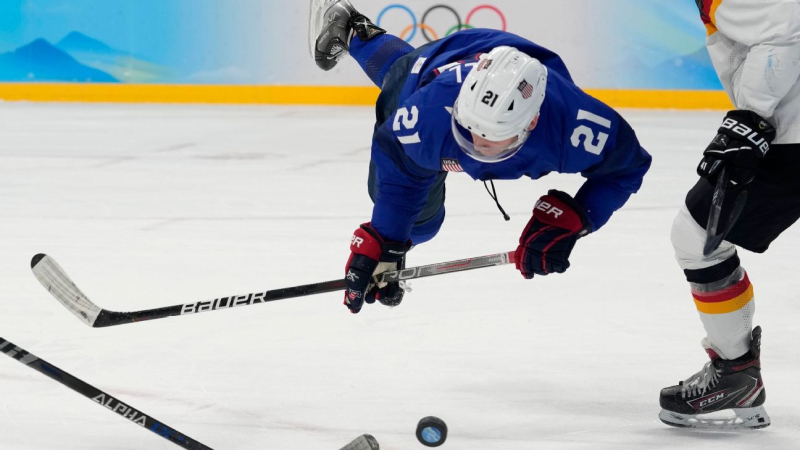
insidethegames.biz 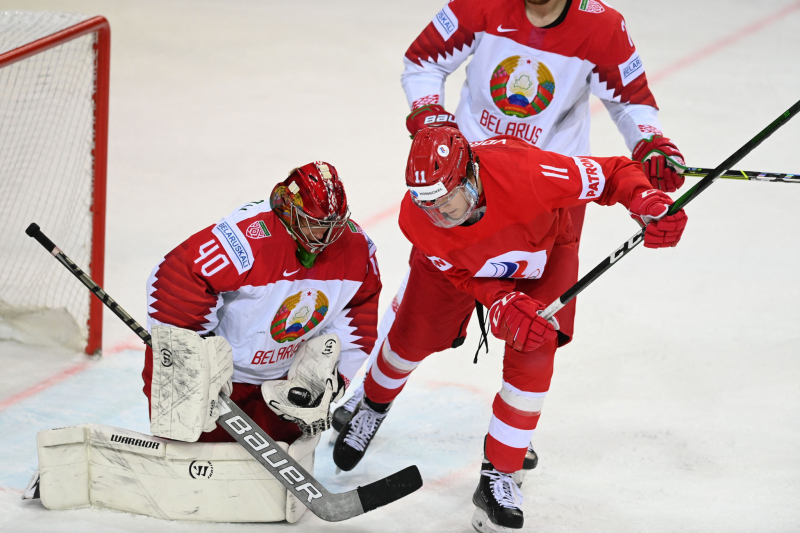
insidethegames.biz -
Under the influence of Byzantine art, Belarus saw the emergence of painting in the eleventh and twelfth centuries. There aren't many pieces from that era now standing, but fresco paintings like those in the Polotsk Sofia Cathedral have survived. In Belarus, a school of fresco painting was established in the sixteenth century. The paintings of Poland and Western Europe were stylistically similar to works from the sixteenth to eighteenth centuries; portraiture was popular. Early in the 20th century, "The Vitebsk School" was crucial in shaping Belarusian national art. Marc Chagall, who was born close to Vitebsk, was the member of the school with the most international recognition. He left his own country in 1922 and later resided in France, Mexico, and the US.
His works frequently feature scenes from Vitebsk, where he was born, and Jewish life in a Belarusian town. After the October Revolution of 1917, he placed a focus on home and historical issues. Artists began concentrating on battle scenes in the 1940s, notably those from the Great Patriotic War. In the 1980s and 1990s, Belarusian art adopted western styles, tackled intellectual and philosophical subjects, and relied on metaphors and symbolic meanings. The decorative and applied arts have had a revival since the 1980s. Popular items include ceramics, glass, batik, and, notably, tapestry. Folk art is also becoming more popular, such as straw weaving.
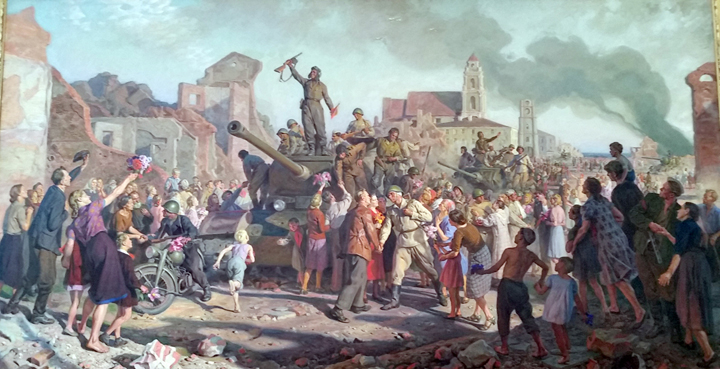
artstudio.org 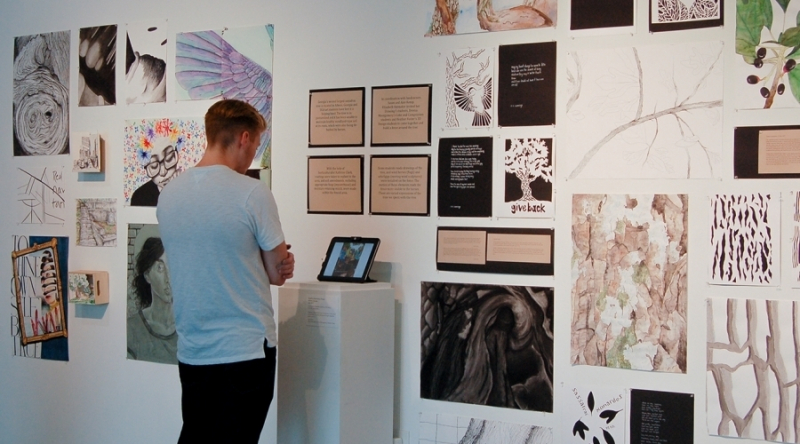
artstudio.org -
Food in Everyday Life. The dietary habits of Belarusians are not all that dissimilar from those of people from other Eastern European civilizations. Red meat and potatoes are common features in their three main daily meals. In their spare time, Belarusians also enjoy spending time in the woods looking for the various kinds of mushrooms that are used in soups and other cuisines. Favorites of Belarusian cuisine include pickled berries, filet à la Minsk, potato dishes with mushrooms, and borscht, a beet soup served hot with sour cream. Hot pancakes are served with a thick soup made with lard called mochanka. It is one of the unique cultural characteristics in Belarus. Additionally, a wide variety of foreign and Russian specialties are offered. Black tea is a popular beverage, and although standards vary, coffee is typically offered with meals and at cafés. Mineral waters, soft drinks, and fruit juices are all abundantly available.
According to ethnographic studies, the majority of Belarusians in the early 20th century had a relatively subpar diet. Since the Bolshevik Revolution, when Soviet laws came into effect, little has changed significantly, albeit the image of a family eating from a communal bowl has been quietly evolving. Eating habits have altered since World War II as a result of industrialization and economic development, but not significantly.Food Traditions during Festive Occasions. Food traditions frequently involve women and highlight their position in society. For example, setting the table for a meal was traditionally a woman's task. Men would refrain from such behavior. Matchmaking is a fascinating cuisine tradition that has long been connected to consuming vodka and eating. The matchmaker would first pay a prospective bride's home a visit and offer refreshments. When the suitor arrived to the woman's home with vodka and food if his proposal was accepted, he was accompanied by the matchmaker. It's interesting to note that the ceremony may be performed repeatedly until the pair became legally engaged. If the engagement was broken, the one who did so would be responsible for covering any costs incurred by the other party. The mourners assemble for a supper after a funeral.
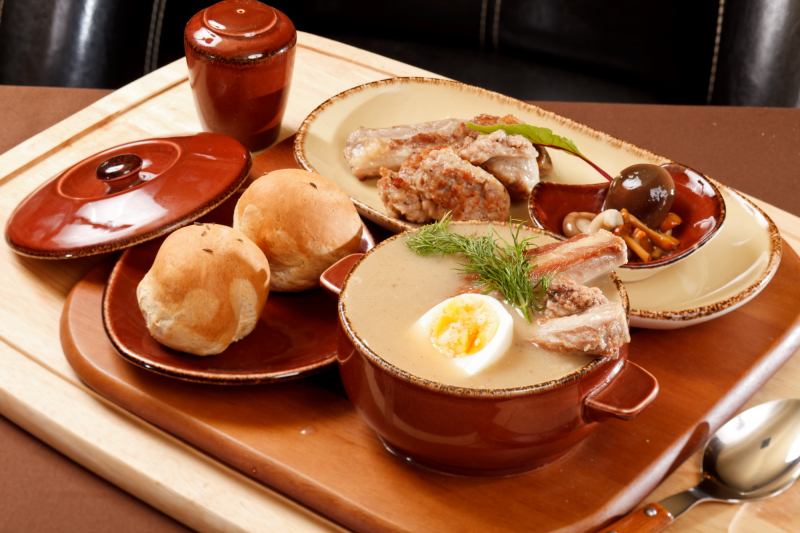
yesbelarus.com 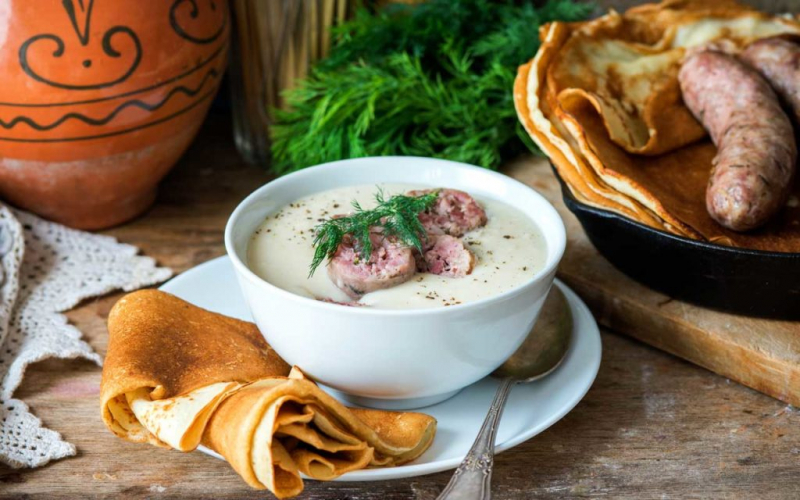
yesbelarus.com -
Belarus has two official languages: Russian and Belarusian. Both Sudovian and Sudavia, a Baltic language, served as the region's pre-Slavic language and as both its geographic and linguistic names. The Sudovian is thought to have vanished somewhere in the 17th century. The only official languages of Belarus are currently Belarusian and Russian, as can be seen in the table below. Multiple linguistic codes coexist in Belarus, which is defined by its language situation. Russian, Belarusian, and the so-called Trasianka, a hybrid language in which Belarusian and Russian parts and structures interchange arbitrarily, are the three most widely used codes.
The Belarusian language law remained in effect following the disintegration of the Soviet Union in December 1991, and a Belarusization campaign was launched with the goal of linguistically Belarussifying the most significant spheres of public life within ten years. The educational system received a lot of attention. However, a significant portion of the population rejected this approach, which led Alexander Lukashenko to raise the topic of purportedly "forceful Belarusization" during his first presidential campaign in 1994.

shecodes.io 
shecodes.io












